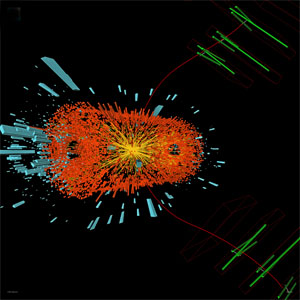Experimental Elementary Particles and Nuclear Physics

With the CMS (Compact Muon Solenoid) detector we will look for new particles such as Higgs and Supersymmetric particles produced in ultra-high energy proton-proton collisions. The LHC (Large Hadron Collider) accelerator is now taking data at CERN and can supply center-of-mass energies of 14 TeV.
The UCLA-CMS group is working on the detection of muons, which are essential signatures for the Higgs and other new particles. We are working on two construction projects: muon "trigger" electronics to identify the muon particles quickly, and construction of a testing facility for the large muon detector chambers.
The EEP group studies the highest energy particle collisions in the world. We are currently preparing for our new upgrade and run, which will give us 20 times more data than before.
In the area of nuclear physics, current QCD research programs focus on STAR experiment at Brookhaven National Laboratory. We study the properties of the QCD matter at extremely high energy density and temperature and investigate the QCD spin structure functions of the proton.
Our group also focuses on nuclear forces and nuclear properties, Quark and Skyrmion models of hadrons, and cross-sections for Pomeron exchange and dibaryon production